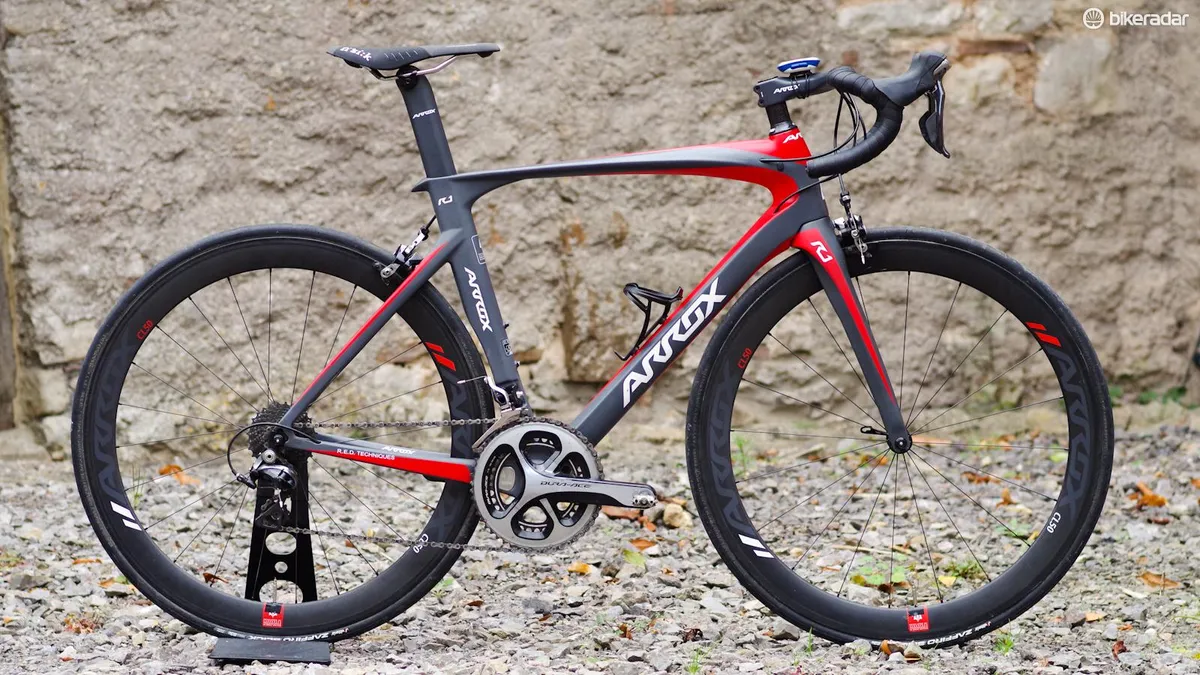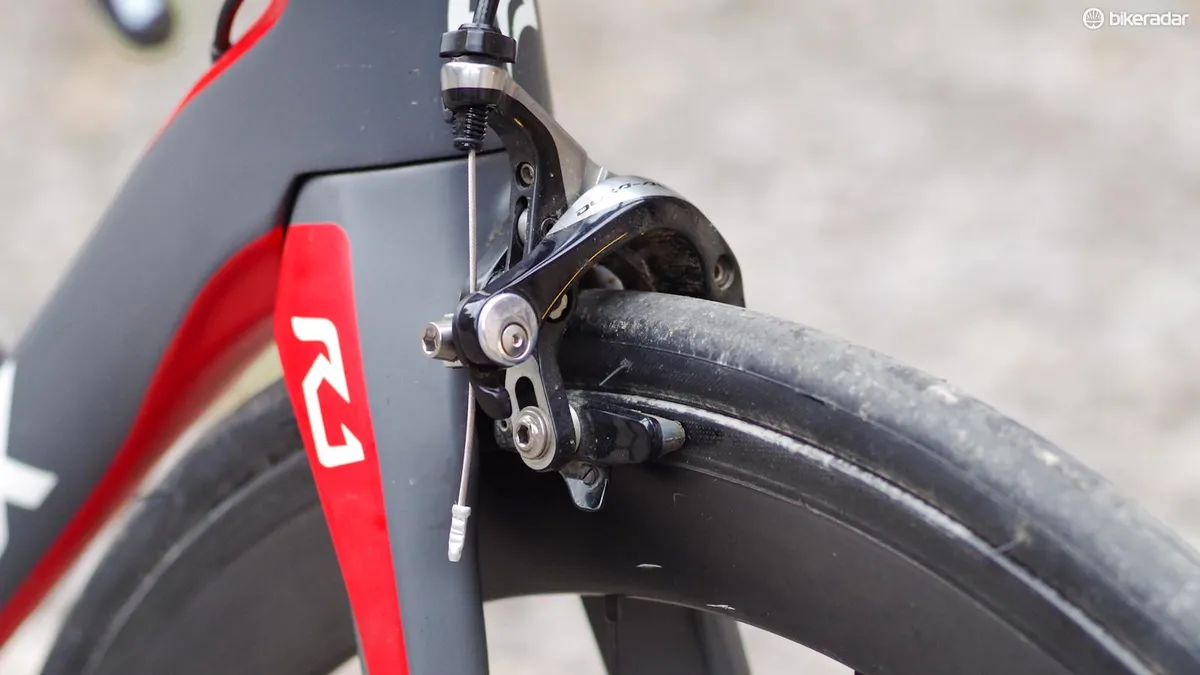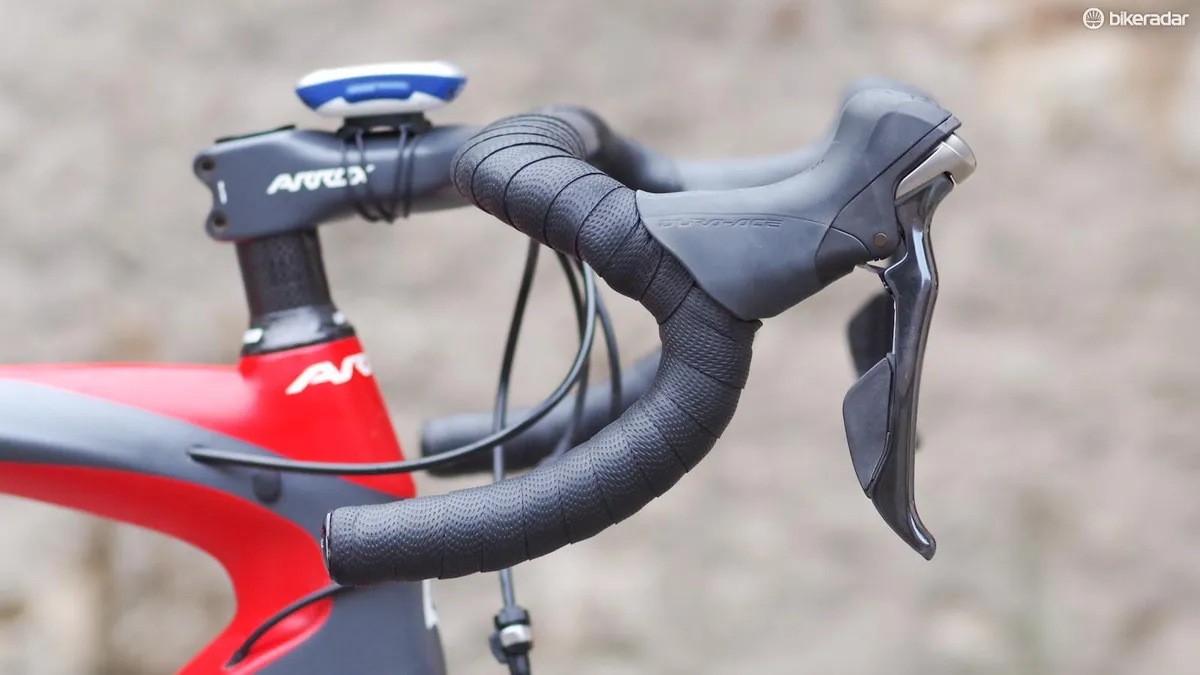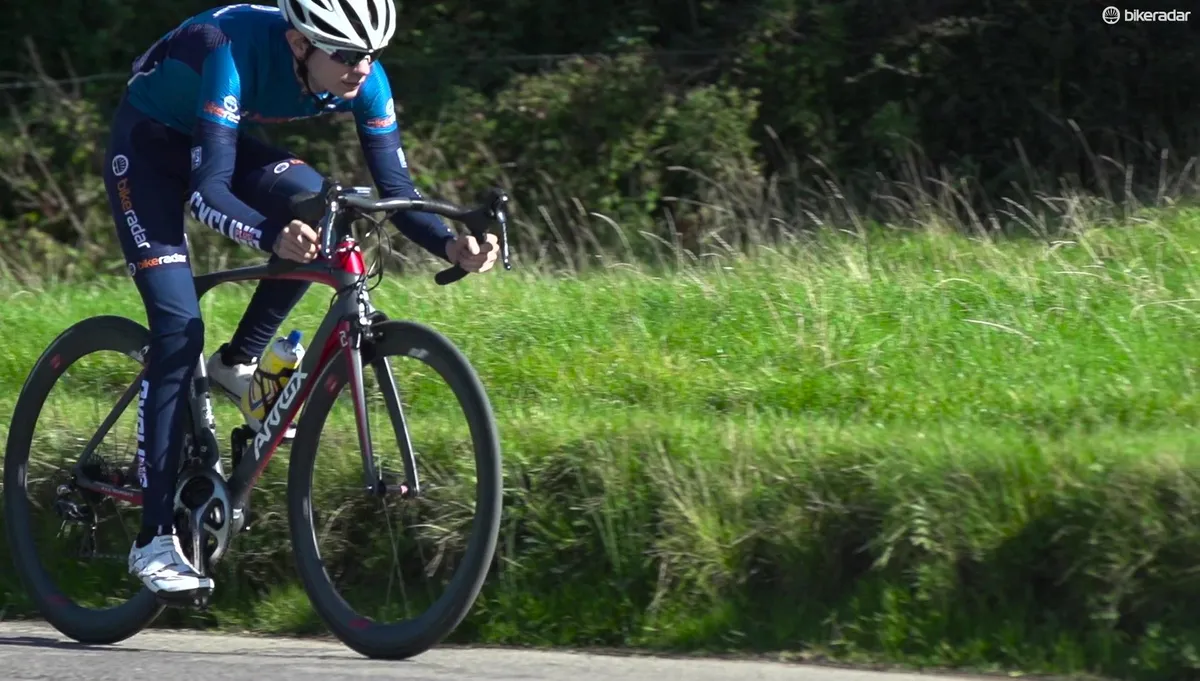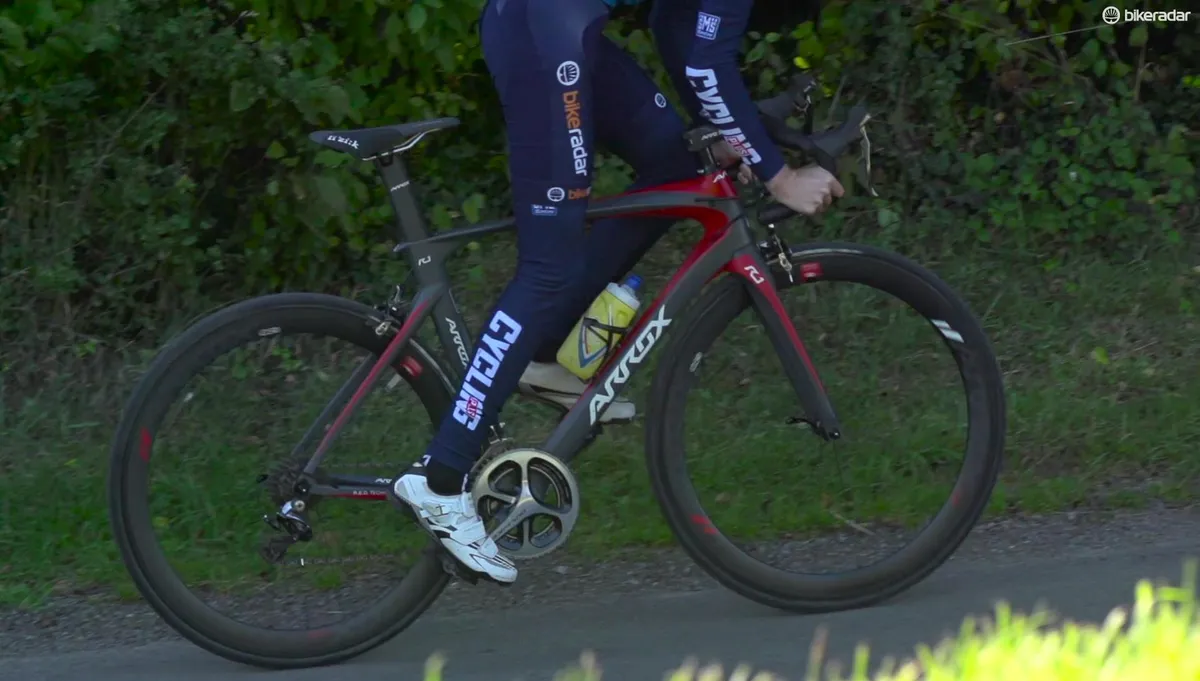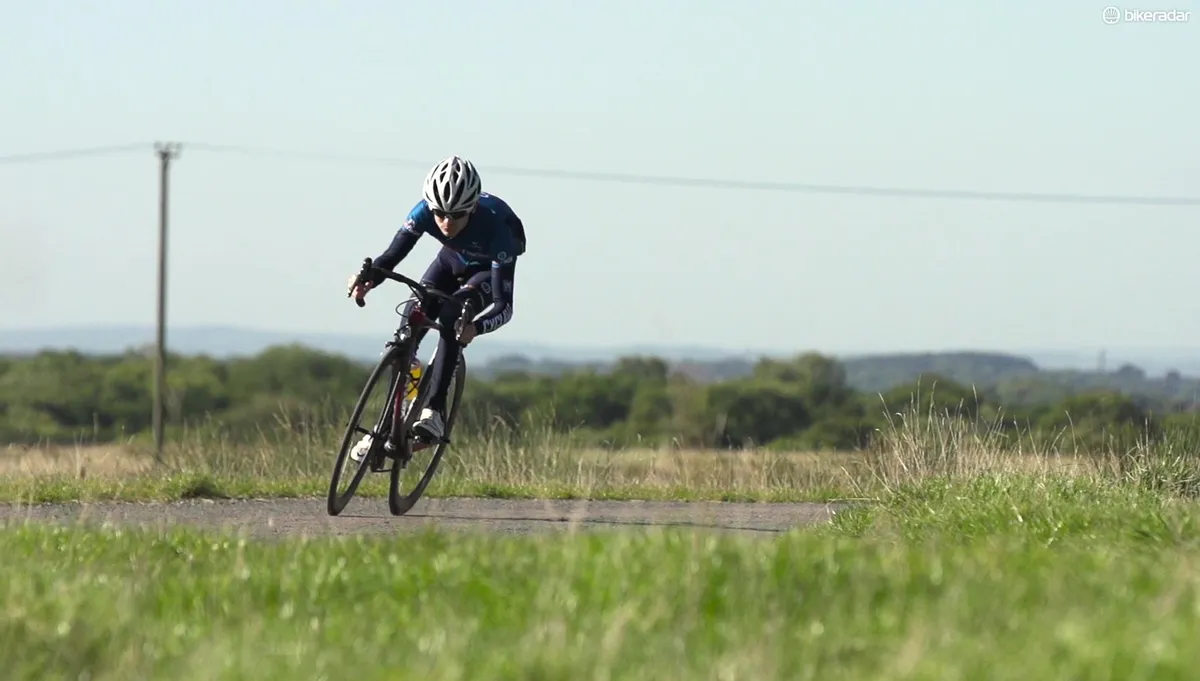The hottest competition these days is in direct sales and one of the latest companies to join the fray is Arrox, a Bristol-based brand founded by a group of aerospace engineers. The R1 is the brand’s first ever bike, and on test here we have the top-spec Arrox R1.3 Dura Ace version with its own-brand carbon clinchers.
What’s in a frame?

As the innumerable pretty graphics on Arrox’s website demonstrate, this is a brand that places some emphasis on its engineering chops and the R1 boasts, among other things, an “unbeatable stiffness-to-weight ratio”. Arrox supports this claim by referencing data from German publication Tour Magazin, although we should point out that Tour has not yet tested the Arrox, and we have no way of validating Arrox’s own testing protocol.
The virtues of the R1 frameset are broken down into what Arrox calls “eight unique genes”, purporting to offer all sorts of stiff, aero goodness. The upper end of the fork legs are referred to as ‘shoulder blades’ (for stiffness and aero), while the cut-out sections on the underside of the downtube near the fork are referred to as the ‘stream diffuser’ (for aero).
The top tube’s pointy ‘aero spine’ is designed to act as an airflow separator, helping maintain laminar flow as air moves towards the seatpost, and the confusingly-named ‘top fin’ tube profile aims to offer maximum stiffness.
Frame detail
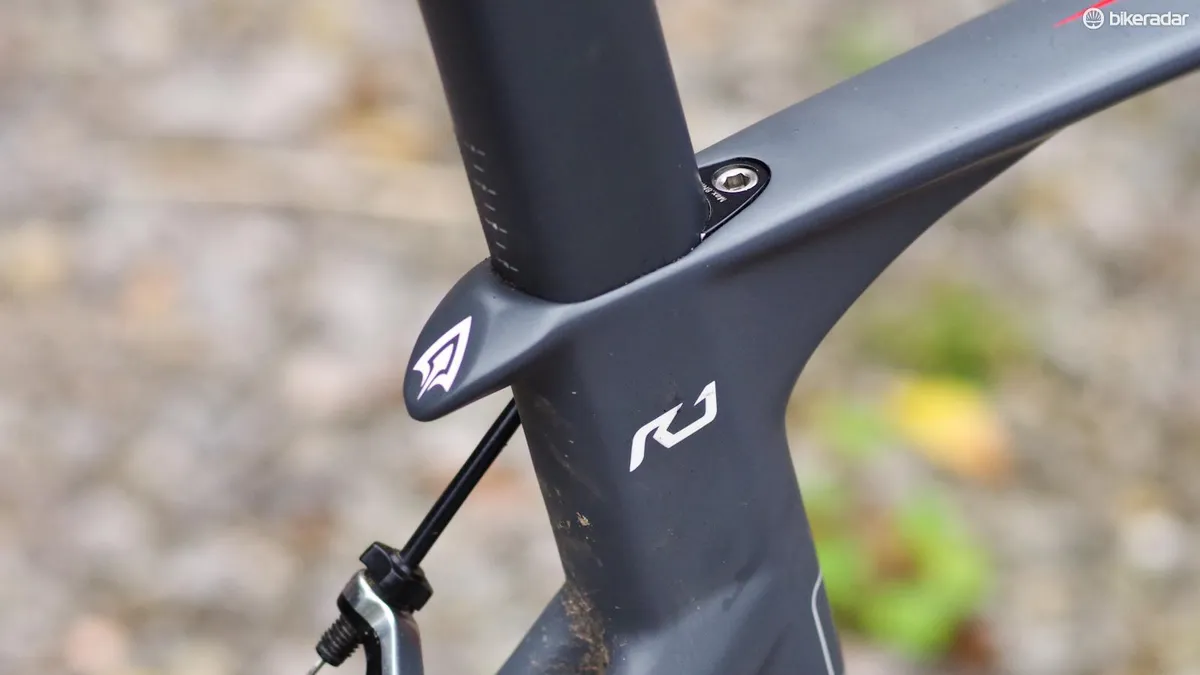
Internal webbing (or ‘tendon’ as Arrox calls it) like that found between the spars of aircraft wings promises lateral stiffness (and comfort, surprise surprise!), while at the back end the ‘soleus’ (that’s Latin for one of your calf muscles, apparently) chainstays have an optimised lay-up making use of “premium carbon fibres”. For maximum stiffness, naturally.
The odd, slightly vestigial looking ‘tail’ behind the seatpost is there to spread the loads created by clamping the post in place, preventing the frame from cracking. The eighth and final ‘gene’ is similarly pedestrian after all that dramatic performance stuff; The ‘clamp falling guard’ inside the seat tube does exactly what it says on the tin: it prevents the seat clamp from becoming stuck in the frame.
We should note that while the frame has many 'aero features', this is not a design that's seen the inside of an actual wind tunnel. Arrox was keen to emphasise however that it had done extensive aerodynamic computer modelling to produce the final frameset, so make of that what you will.
The devil is in the details

All this theoretical stuff doesn't of course tell you anything about what the R1 is like to live with and to ride. It would be fair to say that my testing didn't get off to the most auspicious start.
Immediately apparent was that the valve stems were in serious need of attention as they were rattling to an unbearable degree over the slightest of bumps. Easily cured of course (I used tape, and Arrox is on the case), but annoying all the same.
Next up, it didn't take long to determine that the wheels were generally rather unlovable. Arrox notes that it has applied its aerospace expertise to the carbon lay-up used in their construction, improving their impact resistance. I'm more concerned about their real-word usability, which in all honesty is rather poor by current standards.
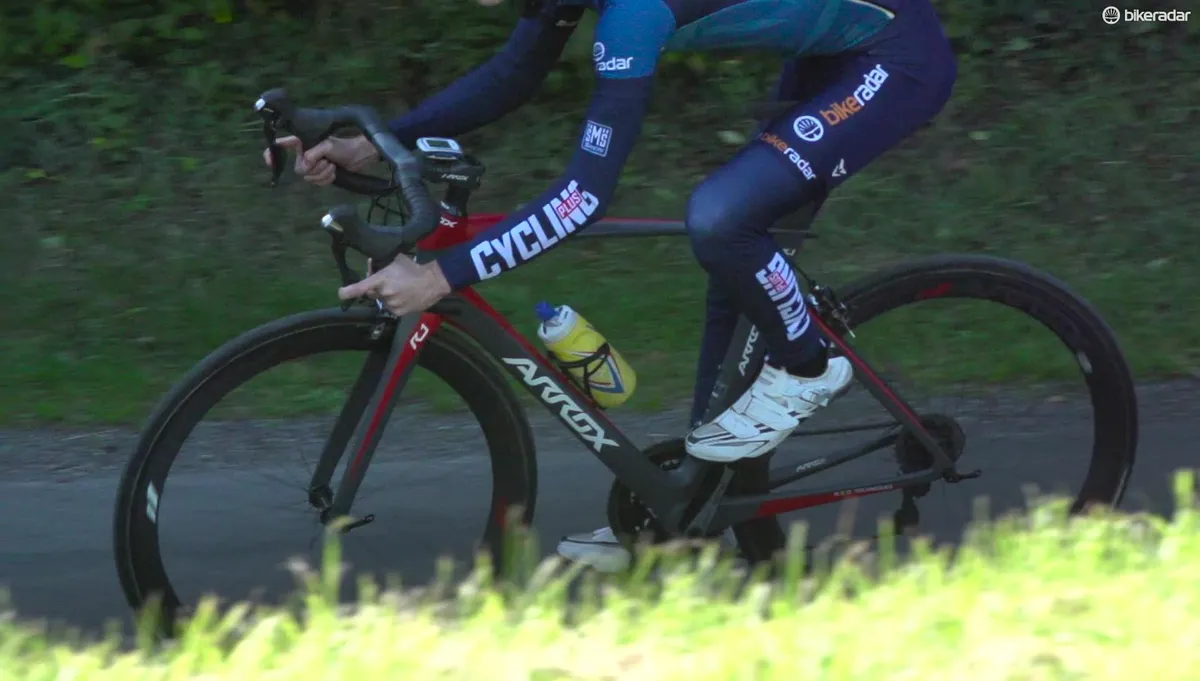
Braking is a blast from the past in that it's grabby and prone to fits of ear-splitting screeching, a reminder of how far some (other) carbon rims have come. The vee-section rims aren't quite slab-sided, but they're not exactly cutting edge in profile either, and they catch a good deal of wind making for twitchy behaviour in gusty conditions. Finally, they offer little vertical compliance to an already reasonably firm riding frame — more on that in a second.
Even ignoring the shape, one-piece bars greatly limit adjustability anyway, making stem length adjustments complicated and bar angle tweaks impossible
While we're on the subject of rolling stock, Arrox's choice of tyres again provides a bit of a head-scratcher — they're only 23mm wide despite the almost-universal move to 25s on road bikes, which offer better all-round performance and comfort. Despite the prevailing trend, Arrox insists that a 23mm tyre is best and the frame's aerodynamic behaviour is optimised with skinny rubber.
Moving on, Arrox's one-piece carbon cockpit doesn't flatter the bike either. It's painted to match the frame in such a way that it appears oddly cheap, but more importantly I didn't get on well with the bend of the drops at all. Out of the box the Dura-Ace levers were mounted too low on the bars, pointing down at the ground slightly and placing strain on one's wrists. Alleviating this was a simple case of moving the levers upwards slightly to make the top of the hoods parallel to the ground, but doing so created an awkward transition from bar to hoods — not the nice flat one I'm now accustomed to with standard road bars.

Even ignoring the shape, one-piece bars greatly limit adjustability anyway, making stem length adjustments complicated and bar angle tweaks impossible. If you're going to spec a bike with a cockpit like this, it needs to be perfect, and this one isn't.
Finally, there is one real problem with the frame that cannot be addressed with a spec adjustment, and that is at the rear dropouts. On a race bike, the rear wheel should drop straight out of the frame once you've undone the quick release and opened up the brake caliper. On the R1, the rear wheel remains resolutely in the frame until you back the skewer nut right off, because it fouls on the carbon at the drive-side dropout. It's as though Arrox has built a lawyer's tab into the rear dropout. By accident.
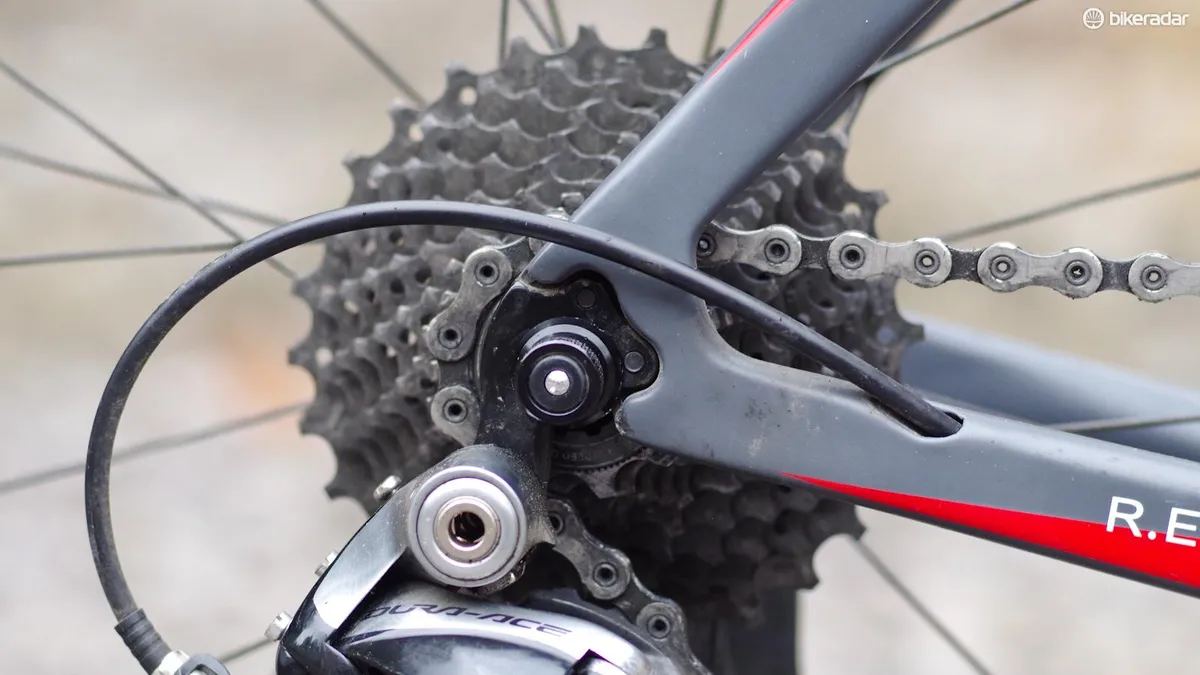
I alerted Arrox to this issue and this is an excerpt from the response I received by email:
“The current combination of thickness, shape and joint angle, on the current dropout is the most reliable with the minimum risk of structural failure. Especially, the areas around dropouts are actually the most vulnerable regions in terms of stress concentration — in most cases frames tend to fail first at those joint regions. Redesigning a completely new dropout would minimise the time to release the rear wheel, but it would also significantly change the stress distribution at the chainstay-to-seatstay joint. We will probably be able to do a full scale study in the future and design our very own dropout, while we also realised that at the moment we will not be able to afford the risk which a new design could generate potentially. Therefore, we decided to compromise rather than take risks.”
Matthew gives his impressions on the Arrox's ride
I don't hate this bike
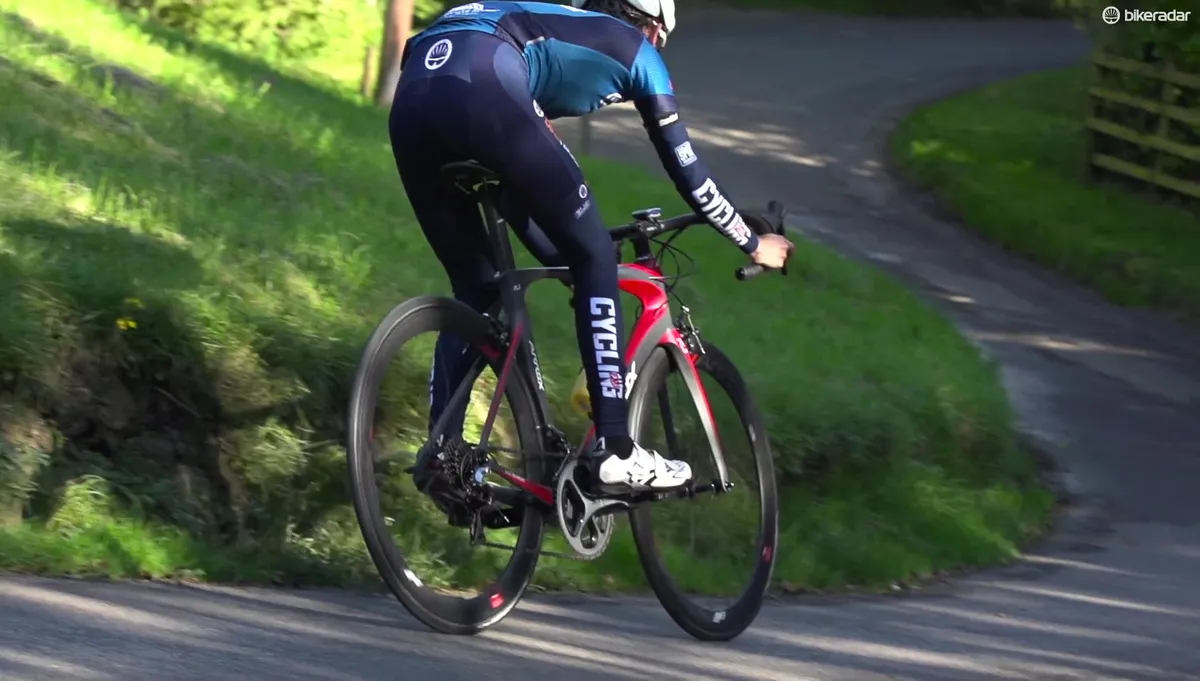
Does it sound like I'm giving Arrox a hard time? The fact is that the frame itself actually isn't half bad. To give it a fair shake independently of its mediocre wheels, I tried the R1 with a set of decent mid-range aluminium clinchers fitted with plump 25mm tyres. (Which fit just fine, by the way — it looks like the main limiter to tyre clearance at the back is actually the front derailleur cable positioning, not the frame itself.)
It was still a reasonably firm ride, but it also felt stiff and light, and not a little bit exciting. In fact, it felt like a decent race bike, which is what Arrox is aiming for. The thing is, there are too many ifs and buts about the spec to recommend it in its current form.
We welcome innovation at BikeRadar and if engineers from other industries want to put their skills to good use designing bikes, then we’re all for it. Arrox has been receptive to our criticisms during the review process and we hope that means it’s going to come up with something we feel able to recommend down the line.
*Note: The full price is £3,299 and at the time of reviewing Arrox has a promotional price that's set to run through to the end of 2016 of £2,659.
